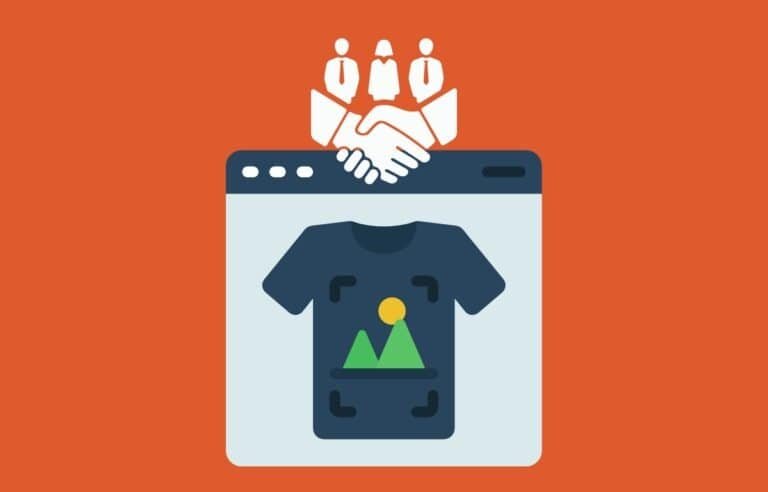كيفية إنشاء مدونة مجانًا على جوجل وكسب المال (2024)
Blogging has become an increasingly popular platform for millions of individuals to share their thoughts, expertise, and passions with the world. What’s even more exciting is that blogging presents a unique opportunity to earn money while doing what you love.
With Google’s free blogging platform, Blogger, you can create a blog and monetize it to generate income. Whether you’re an aspiring writer, an industry expert, or simply have a story to tell, this comprehensive guide will walk you through the process of creating a blog for free on Google and earning money.
Ready to turn your passion into profit and embark on an exciting and fruitful blogging journey? If so, let’s dive in!
The Benefit of Creating a Free Blog
One of the significant benefits of creating a blog for free on Google’s Blogger platform is the low cost involved. Traditional website creation often requires purchasing a domain name and paying for web hosting services, which can add up in terms of expenses.
However, with Blogger, these costs are eliminated. In other words, you can start your online presence without any financial burden.
You’ll be utilizing the free hosting provided by Google. The platform is particularly advantageous for beginners or individuals who are testing the waters in the blogging world and may not be ready to invest a substantial amount of money upfront.
Moreover, the absence of domain registration fees is another cost-saving aspect of using Blogger. When creating a blog on Blogger, bloggers are given a domain name in the format of “yourblogname.blogspot.com.”
This blog format may not have the same level of professionalism as a custom domain. Still, it allows bloggers to establish an online presence without the additional expense of purchasing a domain name.
With a free blog, you get a chance to explore and experiment with different blogging strategies and content ideas without the pressure of financial investment. As you gain experience and their blogs grow, you can always upgrade to a custom domain and web hosting services in the future and turn it into a real business.
The Limitations of Creating a Free Blog
While creating a free blog on Google’s Blogger platform offers numerous benefits, it’s important to keep in mind the limitations that come with it. These shortcomings include:
- Limited control over the blog: When using a free blogging platform, you have limited control over the blog’s features and functionality. Customization options may be limited, and you may not have the ability to add certain plugins or customize the code to your liking.
- Limited design options: While Blogger provides a range of templates to choose from, the design options may be limited compared to self-hosted platforms or paid themes. This can result in a less unique or professional-looking blog design.
- Lack of ownership: When using a free blogging platform, you do not own the domain name or have full control over the blog’s content. The platform can impose restrictions or even shut down your blog if it violates its terms of service.
- Limited monetization options: While you can monetize your blog on Blogger through methods like Google AdSense and affiliate marketing, there may be limitations on the types of ads or affiliate programs you can use. Additionally, you may have less control over the placement and appearance of ads compared to self-hosted platforms.
- Limited scalability: As your blog grows and attracts more traffic, a free blogging platform may have limitations in terms of bandwidth, storage, and performance. This can affect the user experience and may require you to upgrade to a paid hosting service in the future.
Despite these limitations, creating a free blog on Google’s Blogger platform can still be a great starting point for beginners or those on a tight budget. It allows you to get your content out there and start building an audience without the immediate financial commitment and only migrate to a self-hosted platform when you’re ready to.
Can You Make Money Blogging for Free?

Yes, free blogs have the potential to generate income through various methods. But you have to know that many people nowadays are more likely to trust a professional blog over a free one.
So, you may struggle to gain readership and people’s trust. In other words, fewer people may come to your blog and you won’t make as much as a professional blogger with a custom-built website would.
That’s why it’s essential to build a solid readership base, produce high-quality content, and employ effective marketing strategies to make the monetization methods successful.
Steps to Create a Blog for Free and Make Money
Now, let’s move on to the steps of starting a blog for free and making money from it.
Step 1. Pick Your Niche
This can be one of the hardest things to do in blogging. If you pick the wrong niche, you may end up abandoning the blog in the near future.
The reason would be that the niche isn’t profitable or there’s a lot of competition. Also, you don’t want to blog about everything.
The importance of selecting a niche for your blog
Choosing a niche for your blog is crucial for several reasons:
- Targeted audience: Selecting a specific niche enables you to target a particular audience who are interested in that topic. You’re able to create content that resonates with your target audience, increase engagement, and build a loyal readership.
- Differentiation: In a saturated blogging landscape, having a niche helps you stand out from the competition. It allows you to establish yourself as an expert in a specific area and make it easier for readers to trust and follow your content.
- Monetization opportunities: A well-defined niche often leads to better monetization opportunities. Advertisers and brands are more likely to collaborate with bloggers who have a specific niche and a dedicated audience because it provides them with a targeted reach.
Tips for identifying a profitable niche
When identifying a profitable niche for your blog, consider the following tips:
- Research market demand: Conduct thorough research to identify niches that have a high demand. Look for topics that people are actively searching for and are willing to engage with.
- Assess competition: While competition can be a good sign of a profitable niche, it’s essential to assess the level of competition. You need a niche where you can differentiate yourself and offer unique value to your audience.
- Evaluate monetization potential: Pay attention to the potential for monetization within the niche. Are there affiliate programs, sponsored opportunities, or products/services you can create and sell?
- Consider your interests and expertise: It would help if your niche aligns with your interests and expertise. This way, it becomes easier to produce quality content and stay motivated when you are passionate and knowledgeable about the topic.
The need for passion and expertise in the chosen niche
Passion and expertise play a vital role in the success of your blog:
- Authenticity: When you are passionate about your niche, it shines through in your writing and content. Readers are more likely to connect with your genuine enthusiasm and trust your recommendations.
- Credibility and authority: Expertise in your chosen niche helps establish credibility and authority. Your knowledge and expertise will attract readers who are seeking reliable information and insights.
- Long-term commitment: Building a successful blog takes time and effort. Passion for your niche will help you stay committed and consistent and overcome challenges along the way to ensure the long-term sustainability of your blog.
One thing you have to know is that your niche shouldn’t be too broad or too narrow. The best approach is to find a sub-niche within a niche (such as boxing in sports or smoothie recipes in food).
You can even divide the two examples further. For example boxing for women or smoothie recipes for weight gain.
You’re always free to expand your niche afterward. So, don’t sweat it!
Step 2. Set up Your Blog on Blogger
Using Google’s blogging platform, Blogger offers several benefits:
- User-friendly interface: Blogger has a simple and intuitive interface, making it easy for beginners to set up and manage their blogs without technical expertise.
- Integration with Google services: As a Google product, Blogger seamlessly integrates with other Google services like Google Analytics, Google AdSense, and Google Search Console, providing valuable tools for tracking and monetizing your blog.
- Reliable hosting: Google’s infrastructure ensures reliable hosting for your blog, minimizing downtime and ensuring fast loading speeds for your readers.
- Free domain support: Blogger gives you a free domain name for your blog. You can choose your personal or brand name to appear before the “.blogspot.com”
Now, you need to follow these steps to create a blog on Google using the Blogger platform:
Sign up for a Google account
If you don’t have a Google account, visit accounts.google.com and click on “Create account” to sign up. If you already have a Google account, skip to the next step.
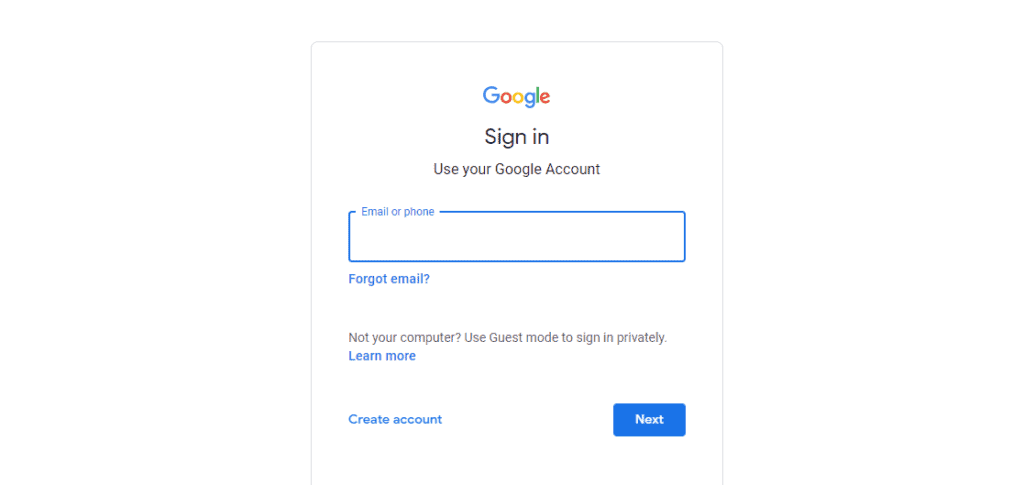
Access the Blogger platform
اذهب إلى www.blogger.com and sign in using your Google account credentials.

Choose a blog name and URL
اضغط على "Create Your Blog” button to begin the process. First, you have to choose a name for your blog:
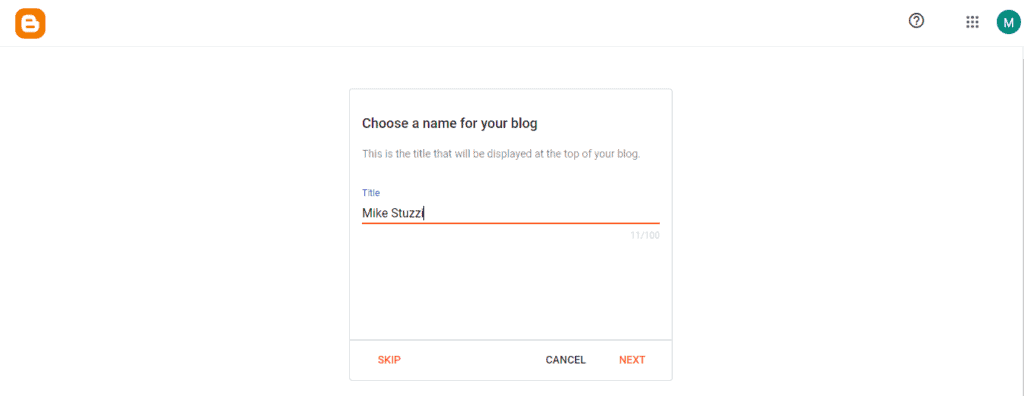
Next, you need to choose a URL (e.g., myblogname.blogspot.com). Ensure the URL is unique (not used by anyone) and reflects the topic or niche of your blog.
While I went with my name in this case (mikestuzzi.blogspot.com), using a brand name is also viable. For instance, I could go with “themarketingguru.blogspot.com” for a blog that covers various marketing topics.
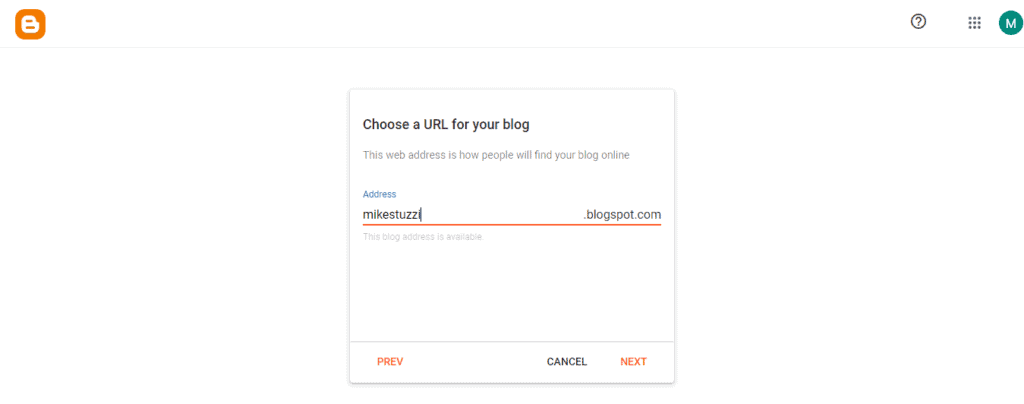
After that, you can confirm your display name. This is how people will see your name on the blog.
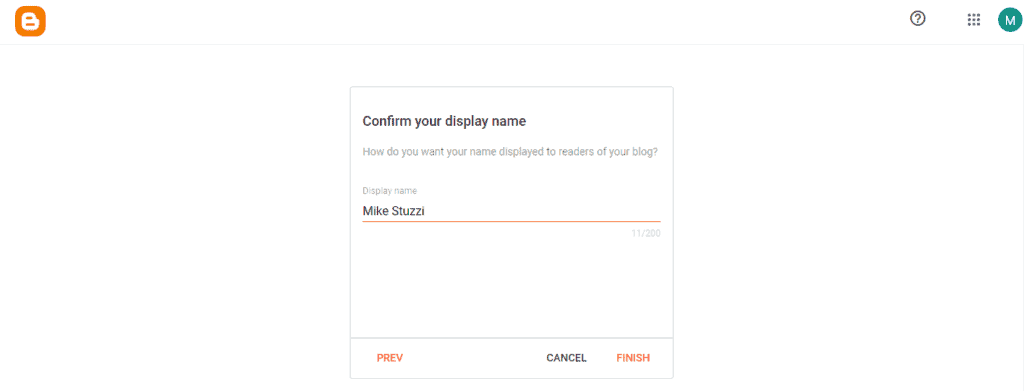
Below is how your new Blogger dashboard should look:
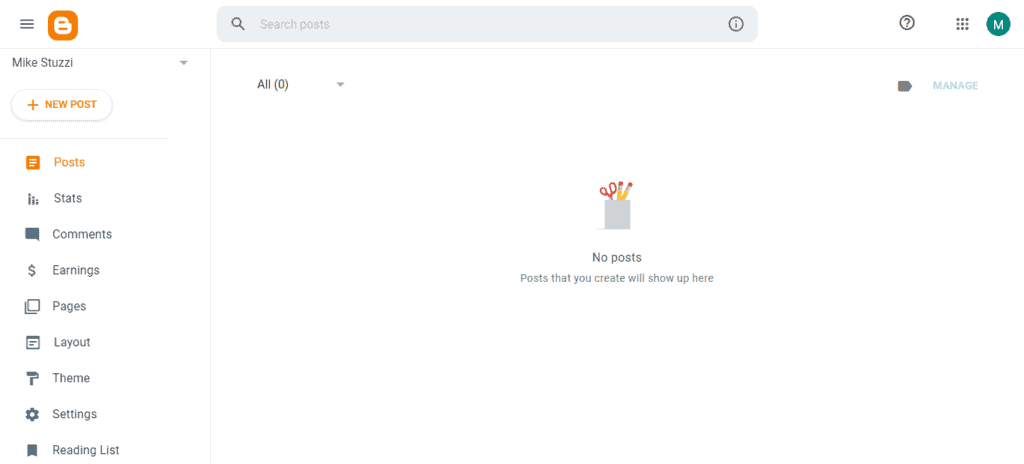
Select a theme and customize the blog’s appearance
You can choose a theme from the available options and then customize the design elements like layout, fonts, and colors. Below is a screenshot of some available themes:
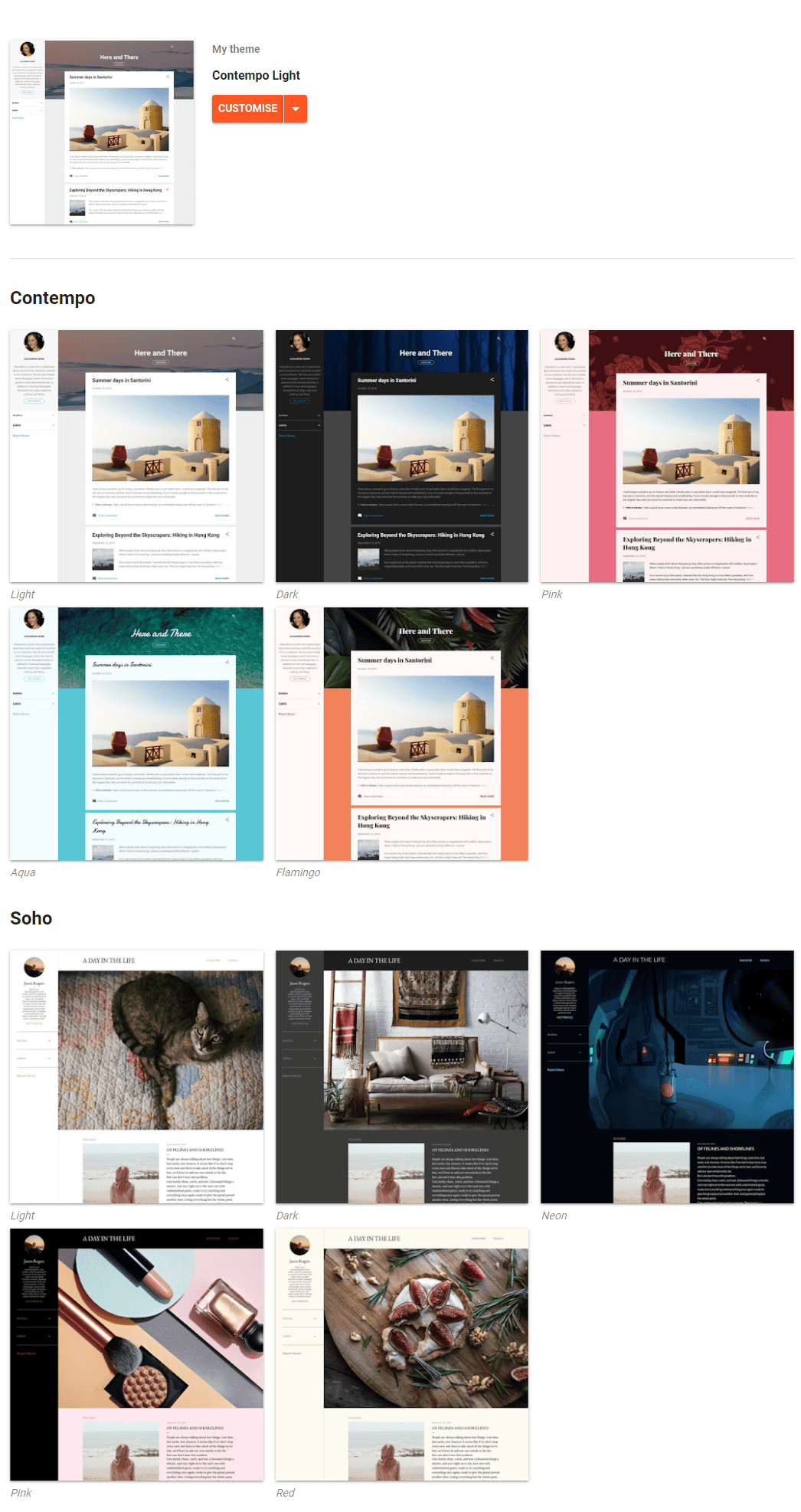
For theme customizations, you can change the background image, main color theme, and advanced options like fonts for the blog title, page text, links, and more.
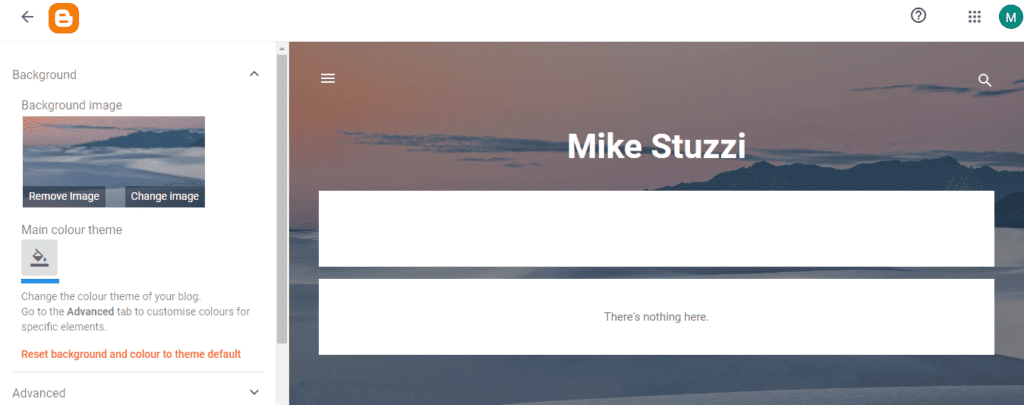
Other than that, you can change your blog’s layout. The layout options include:
- Sidebar (top)
- Sidebar (bottom)
- Search (top)
- Header
- Pag list (top)
Create essential pages
Click on “Pages” in the left sidebar and then “NEW PAGE” to create essential pages like “عن,” “اتصال,” and “سياسة الخصوصية.”

These pages provide important information to your readers and establish credibility.
Publish the blog
Start creating your first blog post by clicking on “New Post” in the left sidebar. Write your content, add images or videos, and format it as desired.
Check out this quick post example I created for my Blogger blog:

You can set the permalink (the link of the post), and location (where you published from) and add labels that make it easy for readers to find your posts. You can also disable comments if you don’t want them.
Once you’re ready, click on “Preview” to view it or “Publish” to make your post live on the Internet. That’s it.
CONGRATULATIONS! Your blog is now live on Google’s Blogger platform.
You can continue creating new posts, promoting your blog, and engaging with your audience to grow your blog’s reach and impact.
Step 3. Create Quality Content
High-quality content is crucial for attracting and retaining readers on your blog. It provides value to your audience by addressing their needs, answering their questions, or offering insights and solutions.
When readers find your content helpful and relevant, they are more likely to engage with it and return for more. Also, well-researched and informative content helps establish your expertise and authority in your niche to gain trust.
If you incorporate keywords in your content and follow the best SEO practices, you can improve your blog’s visibility in search engine results. The result is increased organic traffic because more people discover and click on your content.
On top of it all, engaging and valuable content is more likely to be shared on social media platforms. It’s a chance to increase your blog’s reach and attract new readers.
Now, follow me as I share the top tips for generating engaging blog posts.
Conduct thorough research on the chosen topic
Before writing a blog post, it’s wise to do thorough research to gather accurate and up-to-date information. This helps ensure that your content is reliable, informative, and valuable to your audience.
Write in a clear and concise manner
You need to use simple and concise language to make your content easily understandable. Break down complex concepts into digestible chunks and use headings, subheadings, and bullet points to improve readability.
The thing is that there are numerous أدوات الكتابة بالذكاء الاصطناعي that can help you plan and craft your content. One free tool you can use is ChatGPT, an AI chat assistant that answers your queries.
Use visuals to enhance the content
Incorporating relevant images, infographics, videos, or graphs makes it visually appealing. Visuals can help convey information more effectively and engage readers.
Various مواقع التصوير الفوتوغرافي المجانية exist. But they won’t give you the best images if you compare them to premium platforms.
You can even use AI image generators to create relevant pictures to accompany your posts. They make your work easier and you won’t have to spend hours finding the right visual content.
Incorporate SEO techniques
You have to optimize your blog posts for search engines by incorporating relevant keywords naturally throughout the content. Be sure to use meta tags, descriptive URLs, and internal linking to improve your blog’s visibility in search engine results.
Check out my guide on how to do keyword research for free لمزيد من المعلومات.
Provide actionable takeaways
Offer practical tips, step-by-step guides, or actionable advice that readers can implement in their lives. This not only adds value to your content but also encourages readers to engage with it and share it with others.
Edit and proofread
Before publishing, thoroughly edit and proofread your blog posts to ensure they are free of grammatical errors, typos, and inconsistencies. This helps maintain the professionalism and credibility of your blog.
You don’t have to do this manually because you may miss some of the errors. Instead, you can install a free grammar checker extension, such as النحوي to correct basic mistakes and get suggestions for improvement.
Step 4. Post on Social Media
Google Search isn’t the only avenue for traffic. You can also use social media to boost visits to your blog.
In fact, specific social networks could bring you more traffic when you’re starting out. One example that I recommend is Pinterest, which is suited for a variety of niches, including fashion, beauty, travel, home decor, and finances.
What you need to do is create quality Pinterest pins for your published posts using a tool like كانفا. You can even find free pin templates online to use.
You then need to add optimized titles and pin descriptions. Be sure to publish frequently to gain the trust of the Pinterest algorithm and attract more views and followers.
You can also play with other social media sites like Facebook, Instagram, and LinkedIn. But it would help if you focus on one or a few of them that seem to work for you and your niche.
Step 5. Implement the Right Monetization Methods
There are various ways to monetize your blog. Only do so when you’ve acquired enough traffic.
Displaying ads through Google AdSense
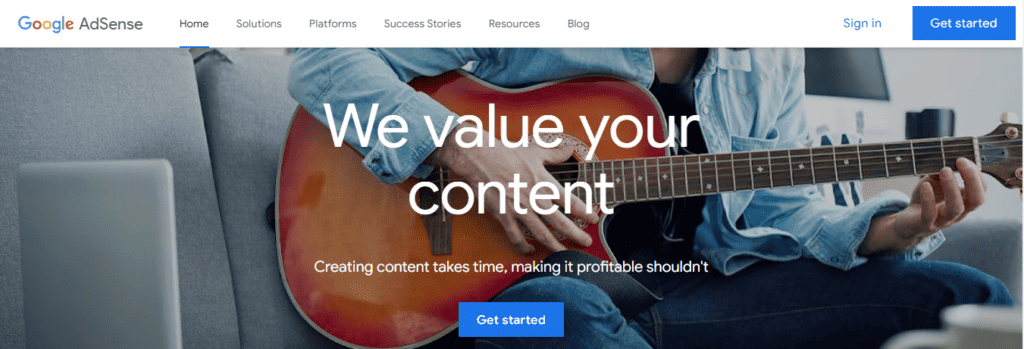
One popular method is to display advertisements on your blog using Google AdSense. AdSense automatically matches ads to your content and pays you when visitors click on or view the ads.
It’s easy to set up and can generate revenue based on the number of impressions or clicks. This blog monetization method requires you to have significant traffic if you want to make some good cash.
التسويق بالتبعية
Affiliate marketing is another method, one I like to use, that you can even do without a blog. It involves promoting products or services on your blog and earning a commission for each sale or action generated through your referral.
What you do is join affiliate programs relevant to your blog’s niche and include affiliate links in your content. When readers click, sign up, or make a purchase through those links, you earn a commission.
Creating and selling digital products
Another way to monetize your blog is by creating and selling المنتجات الرقمية like e-books, online courses, templates, or membership sites. In this case, you leverage your expertise and offer valuable content that your audience is willing to pay for.
Various platforms like Gumroad or Teachable can help you sell and deliver your digital products. You can redirect people from your blog to these platforms or simply list the items in a convenient “shop” section on your blog.
Sponsored posts and collaborations
Brands may approach you for sponsored posts or collaborations, where they pay you to write about their products or services. Be sure that the sponsored content aligns with your blog’s niche and is relevant to your audience.
Offering services or consultations
If you have expertise in a particular field, you can offer services or consultations related to your niche. This could include coaching, freelance writing, graphic design, social media management, or any other skill you can provide to your audience.
You simply promote your services on your blog on content pages or a dedicated “خدمات” page. Use contact forms or booking systems to facilitate inquiries and payments.
ملحوظة: Monetizing your blog requires a balance between generating revenue and maintaining the trust and loyalty of your audience. Choose methods that align with your blog’s niche and audience preferences, and always provide value through your content and offerings.
Also, you need to disclose any moneymaking techniques you’re using, especially affiliate marketing and sponsored content, at the top of each post and on the “تنصل” page.
Step 6. Track and Analyze Your Blog’s Performance
Monitoring your blog’s performance is essential for understanding how your content is resonating with your audience and how you can improve your blog’s engagement and revenue. Regularly tracking your blog’s metrics can help you identify areas of improvement, optimize your content strategy, and make informed decisions about monetization and growth.
Blogger itself can show you the number of views and comments on each post. However, there are more tools to use for analysis.
Tools for tracking blog traffic, engagement, and revenue
- تحليلات كوكل: Google Analytics is a free web analytics tool that tracks website traffic, user behavior, and conversion rates. It provides insights into your blog’s audience demographics, traffic sources, and popular content.
- Semrush: Semrush is a comprehensive SEO and marketing tool that provides data-driven insights into your blog’s organic search traffic, keyword rankings, and backlinks. You can use it to do a competitor analysis and gather content optimization suggestions.
- Ahrefs: Ahrefs is a popular SEO automation tool that tracks your blog’s backlinks, organic search traffic, and keyword rankings. It also provides content analysis and competitor research.
- Hootsuite: Hootsuite is a social media management tool that tracks your blog’s social media engagement, audience growth, and posts’ performance. It also allows you to schedule and publish social media posts across multiple platforms.
- Google AdSense: Google AdSense provides data on your blog’s ad performance, including impressions, clicks, and revenue. It also offers optimization suggestions to improve ad revenue.
Tips for analyzing data and making informed decisions
- Set clear goals and KPIs: Define your blog’s goals and key performance indicators (KPIs) to measure success and track progress. This could include metrics like traffic, engagement, revenue, or conversion rates.
- Analyze data regularly: Monitor your blog’s metrics regularly to identify trends and areas of improvement. Use tools like Google Analytics to track your blog’s traffic, user behavior, and conversion rates.
- Identify your top-performing content: Analyzing your blog’s content can help to identify the most popular and engaging posts. Use this information to optimize your content strategy and create more of what resonates with your audience.
- Experiment and test: It’s wise to try new strategies and tactics to see what works best for your blog. Test different headlines, content formats, or monetization methods to see what generates the most engagement and revenue.
Use data insights to make informed decisions about your blog’s growth and monetization. Avoid making assumptions or relying on intuition alone, and instead use data to guide your decisions.
Remember, tracking and analyzing your blog’s performance is an ongoing process. It’s far from a one-time or once-in-a-while thing and requires regular attention and optimization.
Step 7. Scale Your Blog
There are various ideas that you can execute to get the most out of your free blog and be able to create a self-hosted blog where you look more professional and trustworthy.
Collaborations and partnerships
You can collaborate with other bloggers, influencers, or brands in your niche to expand your reach and tap into their audience. These collaborations can include guest posting, co-hosting webinars or podcasts, or participating in joint marketing campaigns.
Build and monetize your email list
Leverage your email list-building techniques such as offering exclusive content, promotions, or discounted offers to your subscribers. This can generate additional revenue from your most engaged audience.
Expand into new formats
You can diversify your content formats by creating videos, podcasts, or infographics. This can attract a new audience and provide opportunities for additional revenue streams, such as YouTube monetization or podcast sponsorships.
Useful Tips for Your Blogging Journey
Blogging requires continuous learning. You can always be in the know if you follow the tips below:
- Stay updated with industry news: Follow industry blogs, news websites, and social media accounts to stay informed about the latest trends, updates, and best practices in your niche. This will help you keep your content fresh and relevant.
- Attend conferences and webinars: Participate in conferences, webinars, or workshops related to your blog’s niche. This way, you can get new opportunities to network and learn from experts
- Join online communities: It helps to be a part of various online communities, forums, or social media groups where professionals in your niche share knowledge and discuss blogging or industry-related matters. This will allow you to learn from others and stay connected with the latest developments.
- Invest in education and courses: Investing in online courses, workshops, or certifications is how you can enhance your skills and knowledge in areas like content marketing, SEO, or social media. This continuous learning will help you stay ahead of the curve and improve your blog’s growth.
خاتمة
As you can see, blogging for free and earning money is possible. But it requires a lot of time and effort.
You can’t just create one or two posts and expect to see money in your accounts. You’ll need dozens of them to make money.
Also, people have to see your content. You need to implement SEO and also promote the blog online to maximize its visibility.
That’s how you’ll get enough traffic to start making money.
I’ll also emphasize the fact that you can’t expect to make thousands of dollars a month with a free blog. Blogging, just like many other things, requires monetary investment too for the best results.
A free blog on platforms like Blogger should only be a way to get the hang of how blogging works as you prepare to launch your own site with a custom domain and hosting.
You’ll be surprised to know that a domain together with hosting only costs a few hundred dollars per year. If you ask me, it’s worth the investment!



